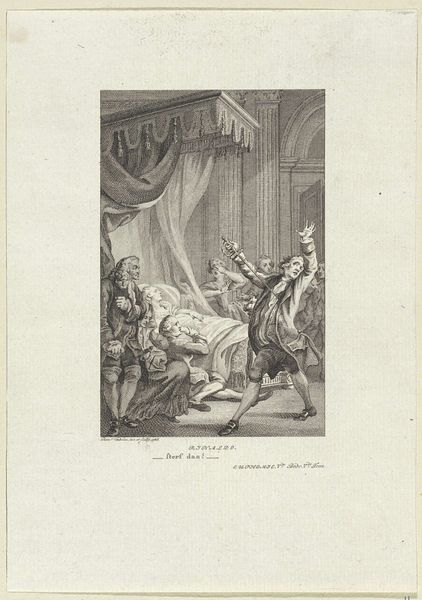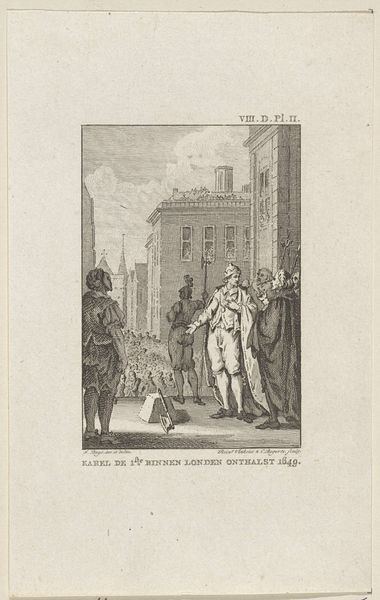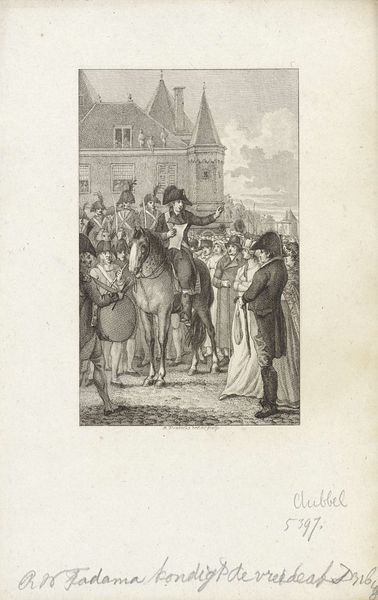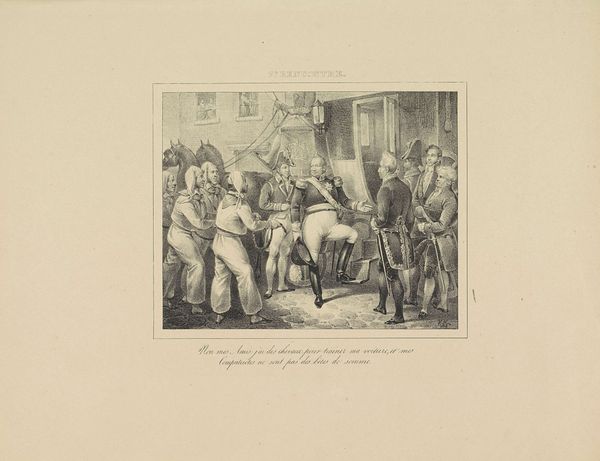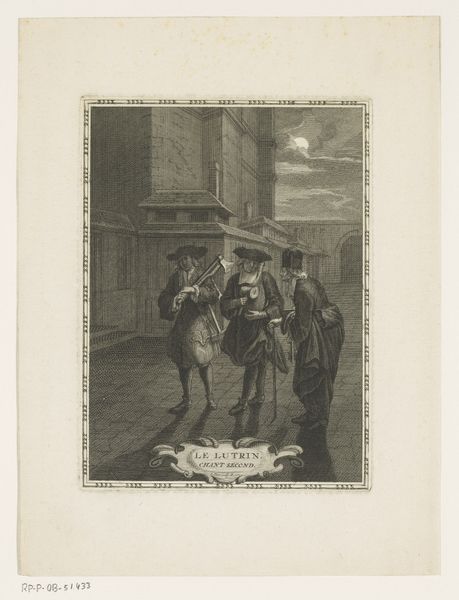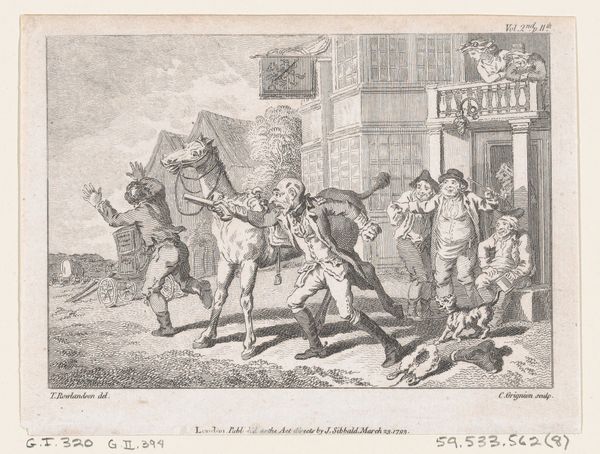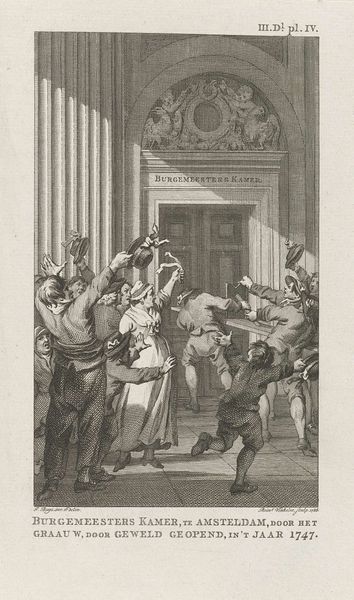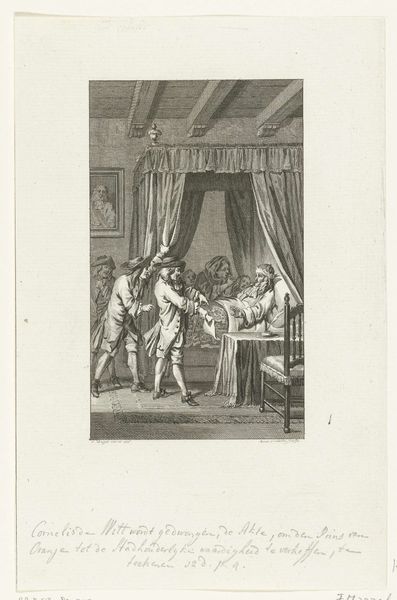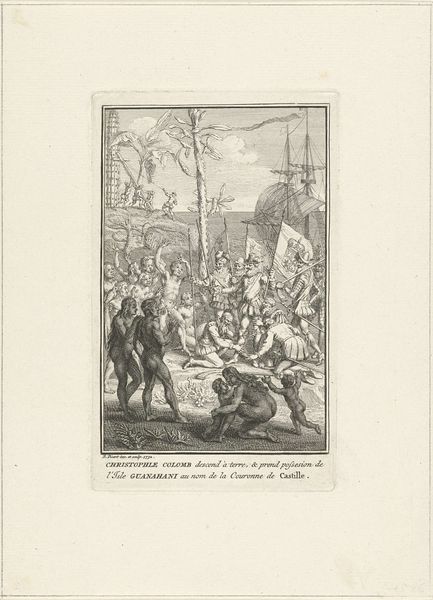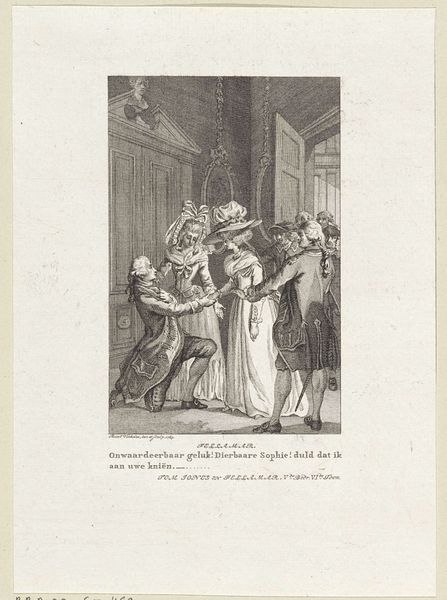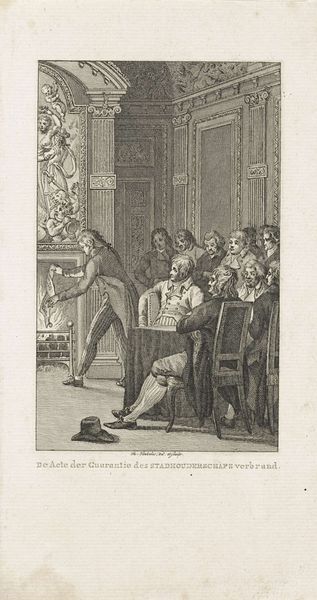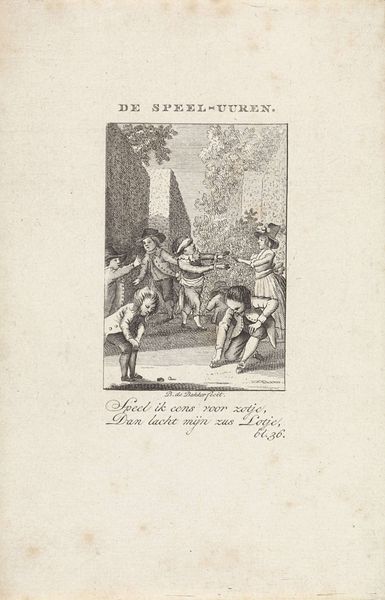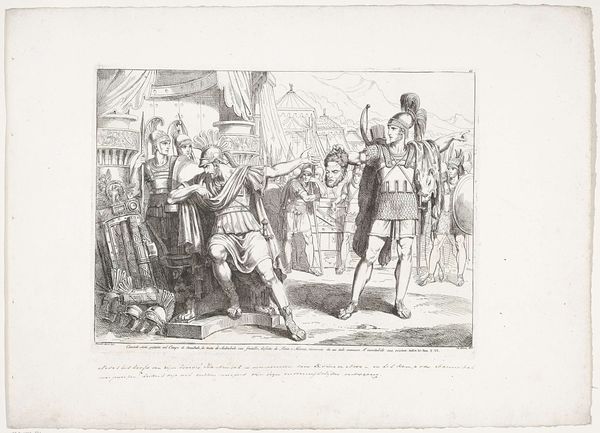
Man met een kruis in de hand op een wagen omringd door soldaten 1751 - 1816
0:00
0:00
reiniervinkeles
Rijksmuseum
print, engraving
#
neoclacissism
#
aged paper
#
narrative-art
# print
#
old engraving style
#
figuration
#
line
#
cityscape
#
history-painting
#
engraving
Dimensions: height 247 mm, width 156 mm
Copyright: Rijks Museum: Open Domain
Curator: This somber scene truly captures a historical moment, doesn’t it? What strikes you first? Editor: The sheer number of lines! It gives it a certain grit, doesn’t it? And the aged paper, I wonder what type it is? Curator: Yes, it certainly has that aged aesthetic, consistent with its origin. This is an engraving, entitled "Man met een kruis in de hand op een wagen omringd door soldaten", dating roughly from 1751 to 1816, attributed to Reinier Vinkeles. You can find it here at the Rijksmuseum. It clearly attempts to capture a dramatic event, likely a politically charged scene, as Vinkeles often engaged with the imagery of his time. Editor: Definitely. Looking closer, it's the process that intrigues me. To what extent would the creation of prints like this engage labour that perhaps hasn't historically been categorised as skilled artistic production, as distinct to merely reproductive work? How were artisans organized, and how was this facilitated? Curator: Those questions get at the heart of its place in public life. Printmaking like this democratized imagery. Before photography, engravings spread news and shaped public opinion. Notice how the artist emphasizes the regiment of soldiers surrounding the central figures. The building is presented quite clearly also: printmaking serves to establish a visual record, embedding particular narratives into the collective memory. Editor: Exactly! And this form of engraving necessitates the engagement with production networks and perhaps craft associations? It seems so important to acknowledge those networks of support. Curator: That is true. Looking at how the narrative is so neatly packaged—the somber tone, the looming architecture in the background— it shows how art became increasingly self-conscious of its social role during the rise of Neoclassicism. Editor: An apt reminder that the circulation of art depends as much on those behind-the-scenes contributors as it does on the named artist, if not more so! Curator: Indeed. Examining this piece opens up fascinating questions about art, production, and political power in the 18th century.
Comments
No comments
Be the first to comment and join the conversation on the ultimate creative platform.
